Catalog: Poster in the Centenary History of the Polish Red Cross
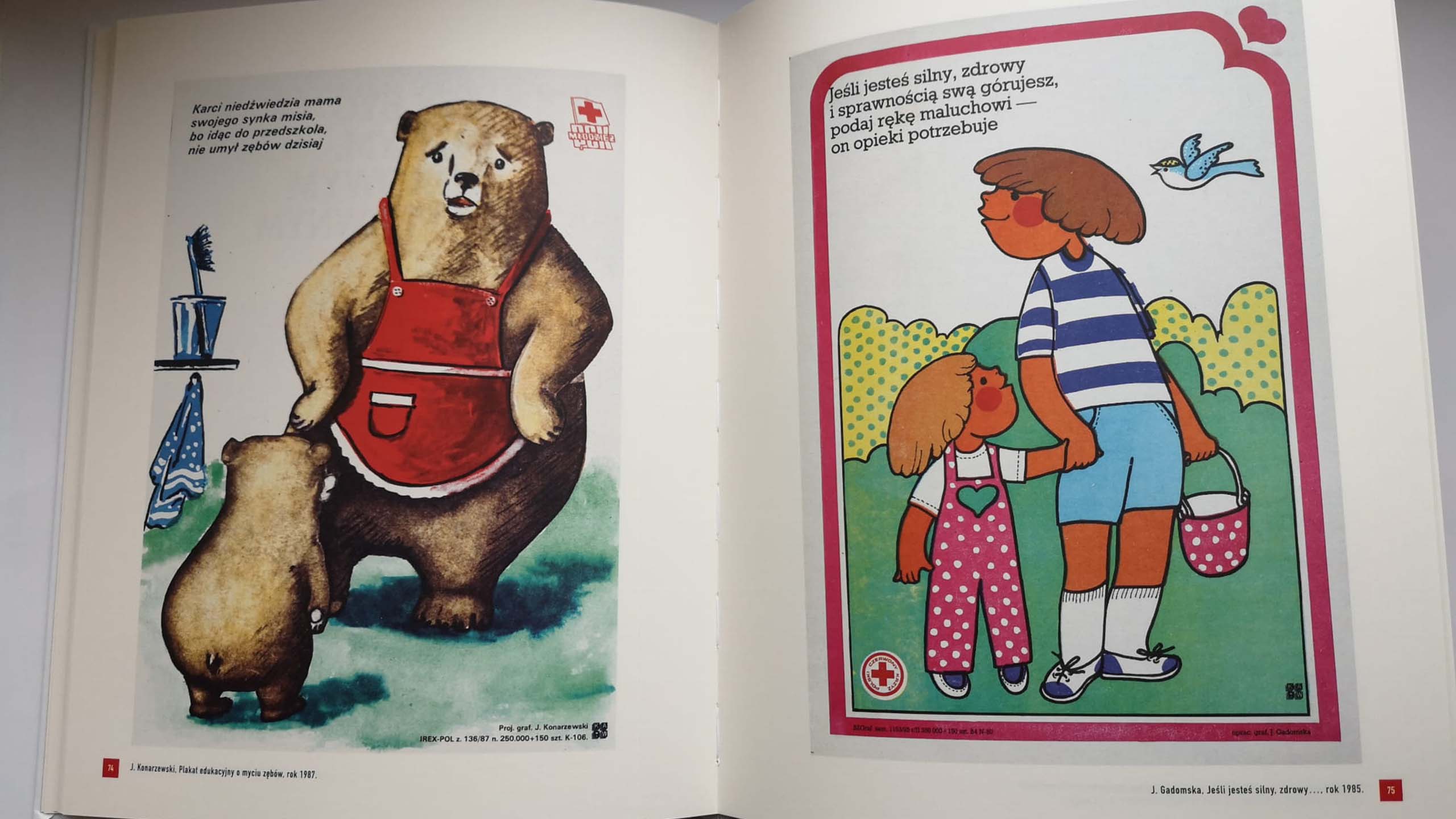
In 2019, the Polish Red Cross celebrated the 100th anniversary of its existence. The solemn inauguration of the jubilee year took place on January 18, 2019, during a press conference at the Bristol Hotel. It was there, 100 years ago, after Poland regained independence, that a meeting of all existing organizations in Polish territory, guided by the ideals of the Red Cross, was convened at the initiative of the Polish Samaritan Association. During the meeting, held under the patronage of Helena Paderewska, they established the Polish Red Cross Society.
The fate of the Polish Red Cross is closely linked to the rebuilding of our statehood. Throughout this period, the organization has shaped and supported Polish society, providing selfless assistance and raising awareness of the suffering of others. Our society has experienced many misfortunes. The Polish Red Cross, like the International Red Cross and Red Crescent Movement, constituted a response from good, sensitive people to widespread social needs. It arose from the desire to provide assistance during disasters, wars, famine, and epidemics, adopting the care for human dignity as its mission. Currently, it occupies a unique position among many non-governmental organizations in our country, being an association that promotes humanitarianism, freedom, solidarity, and respect for human dignity and rights.
One of the events during the 100th anniversary of the Polish Red Cross was the exhibition "Polish Red Cross. A Poster in a Century of History," which was presented in the Open Gallery at the Hermitage in the Royal Łazienki Museum in Warsaw. It concerned the graphic works of artists who designed for the Polish Red Cross over the course of its 100 years of existence. The posters created by representatives of the Polish poster school were stylistically diverse. Their common features were succinctness and economy of form, irony, and innovative typography. The character of the works of Polish poster artists has often been described as a style of "independence and sharpness of mind," and the Polish poster school influenced many Western designers and graphic artists, who recognized it as an original phenomenon and a source of inspiration in their own work. This happened through the outstanding creators whose works were also showcased in this exhibition.
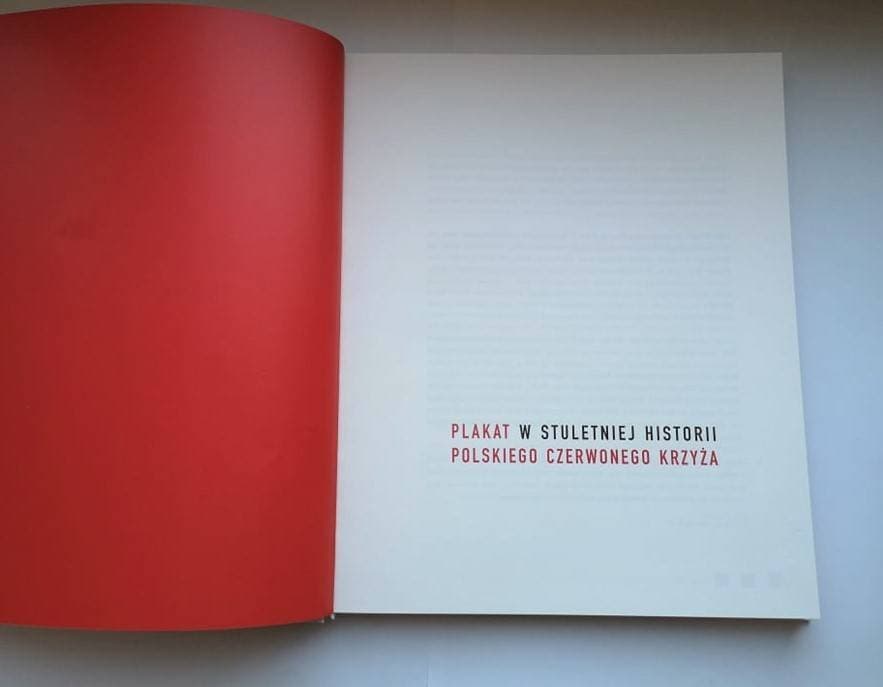

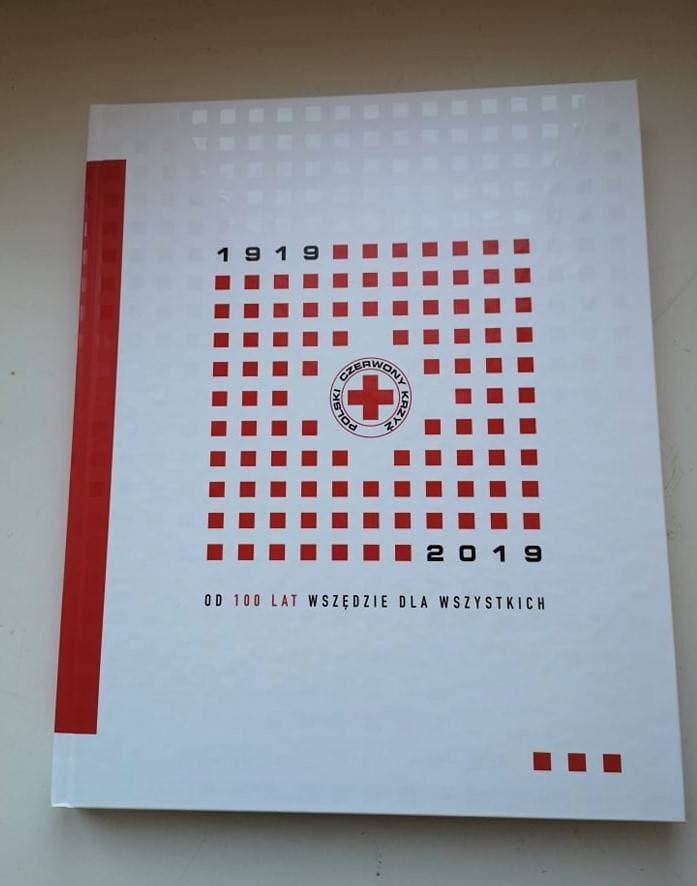
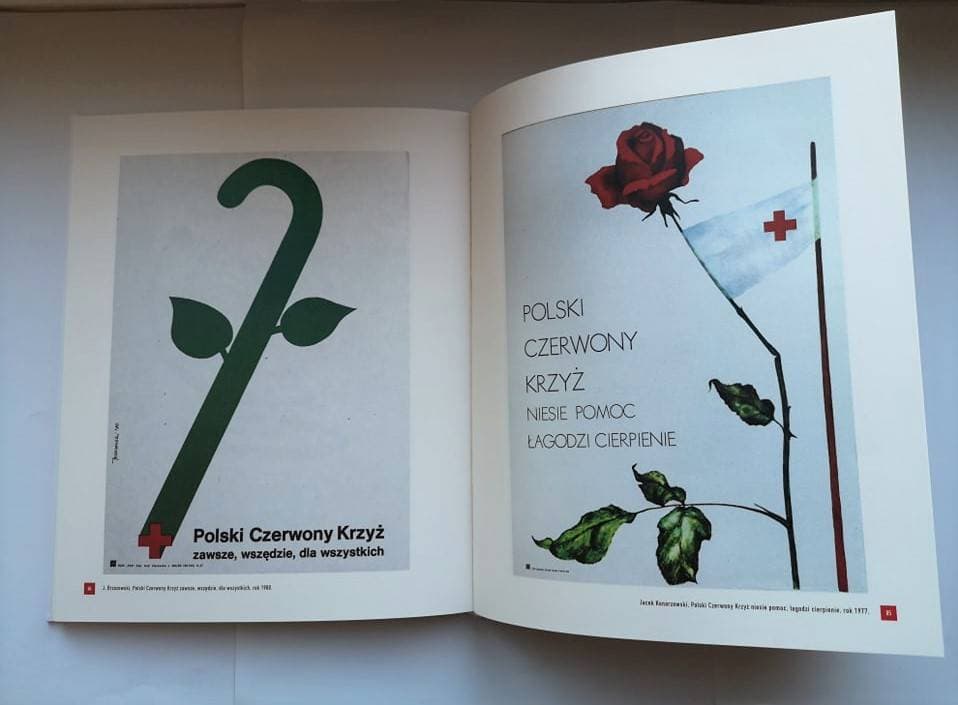
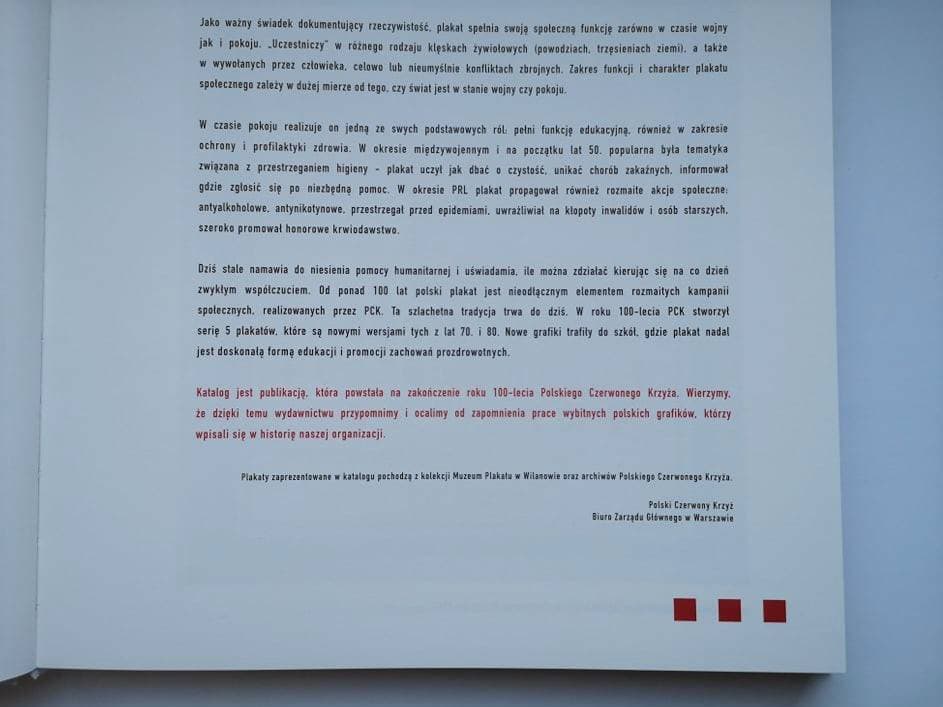
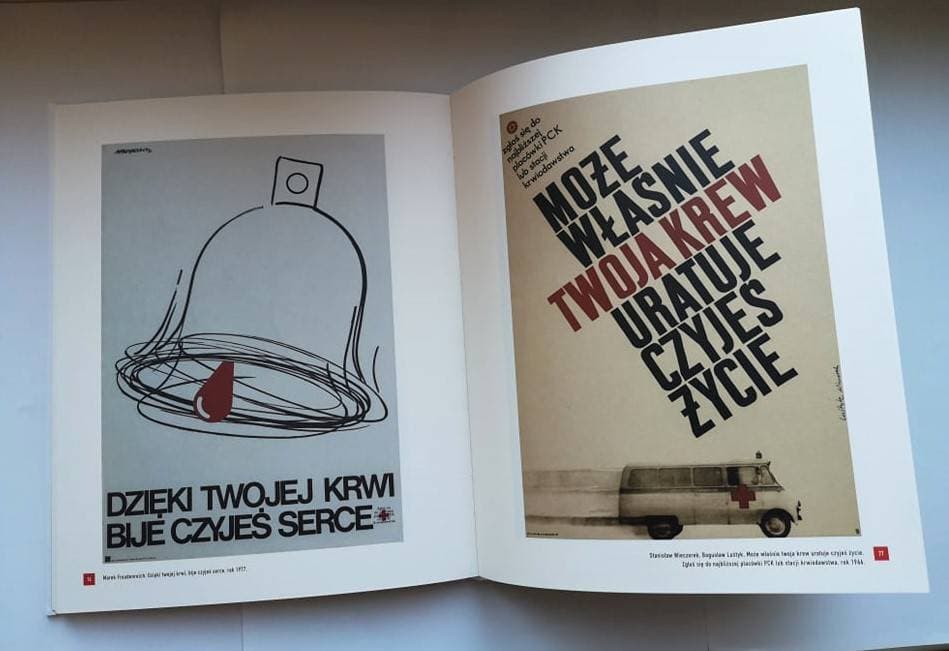
The Polish Red Cross, to effectively reach the audience with a given message, commissioned projects from outstanding Polish graphic designers, including: Tadeusz Gronowski, Marian Bogusz, Bogdan Nowakowski, Konstanty Maria Sopocko, Jerzy Srokowski, Maksymilian Kalużny, Andrzej Pągowski, Janusz Stanny, Witold Chmielewski, Maria Komorowska, Marek Freudenreich, Waldemar Świerzy, Rostał Szaybo, and Joanna Sedlaczek.
The catalog that we present to you aims to popularize and remind of the simple principles and truths that were communicated through posters over the century. They today represent an extraordinary testimony to the transformations our country underwent in the twentieth century and at the same time the evolution of the visual language through which artists spoke about important issues related to health or safety. Starting from 1919, various actions initiated by the Polish Red Cross found reflection in posters, which have thus permanently entered the history of Polish social posters.
As an important witness documenting reality, the poster fulfills its social function both in times of war and peace. It "participates" in various natural disasters (floods, earthquakes) as well as in human-made conflicts, whether intentional or unintentional. The scope of functions and the nature of social posters largely depend on whether the world is at war or in peace.
In peacetime, it performs one of its basic roles: it serves an educational function, including in the field of health protection and prevention. In the interwar period and in the early 1950s, themes related to hygiene were popular—the poster taught how to care for cleanliness, avoid infectious diseases, and informed where to seek necessary assistance. During the PRL (People's Republic of Poland), posters also promoted various social campaigns: anti-alcohol, anti-tobacco, warned against epidemics, raised awareness of the problems faced by the disabled and the elderly, and widely promoted blood donation.
Today, it constantly encourages humanitarian assistance and raises awareness of how much can be achieved through ordinary compassion on a daily basis. For over 100 years, Polish posters have been an inseparable element of various social campaigns carried out by the Polish Red Cross. This noble tradition continues to this day. In the 100th anniversary year, a series of 5 posters were created, which are new versions of those from the 1970s and 1980s. The new graphics were distributed to schools, where posters continue to be an excellent form of education and promotion of healthy behaviors.
The catalog is a publication that was created at the conclusion of the 100th anniversary of the Polish Red Cross. We believe that through this publication we will remind and save from oblivion the works of outstanding Polish graphic designers who became part of the history of our organization.
The posters presented in the catalog come from the collection of the Poster Museum in Wilanów and the archives of the Polish Red Cross.
Help us endlessly
Thanks to the kindness and support of our Donors, we can help children, seniors, support medical rescuers, promote the idea of blood donation, and implement many other projects that save lives in times of conflict or humanitarian crises. Every donation and every form of support is significant because the Polish Red Cross connects those in need with those who want to provide help. Let’s help together!
You are currently viewing a page filtered by content from the department. Cała PolskaIf you want to view content from Cała Polskaclick the button